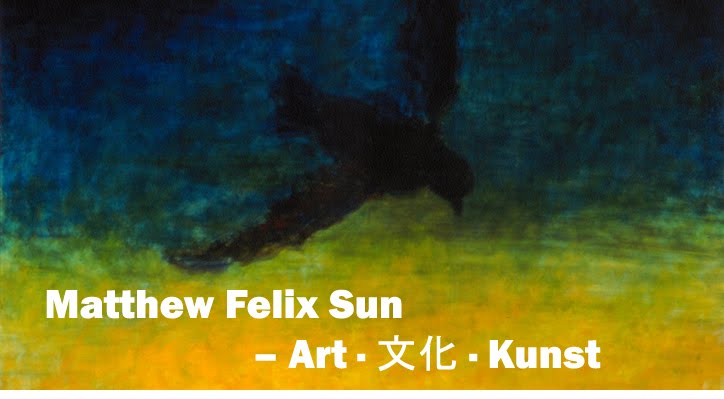
The ongoing special exhibition at San Francisco Museum of Modern Art (
SFMOMA),
Edvard Munch: Between the Clock and the Bed
(June 24-October 9, 2017), "featuring 44 landmark compositions about art, love, mortality, and the ravages of time", which could well be a record of current turbulent time, is profoundly unnerving and ultimately moving. Moreover, "these profoundly human and technically daring artworks reveal Munch as a
tireless innovator and an artist as revolutionary in his maturity as he
was in his breakthrough years."
First, a group of self-portraits, dating from 1886 through 1940s, and one could see that Munch moved rapidly from almost quaint to deeply psychological.

Self-Portrait, 1886


Self-Portrait under the Mask of a Woman, 1893 & Self-Portrait with Brushes, 1904

Self-Portrait with a Bottle of Wine, 1906

Self-Portrait with Hand under Cheek, 1911

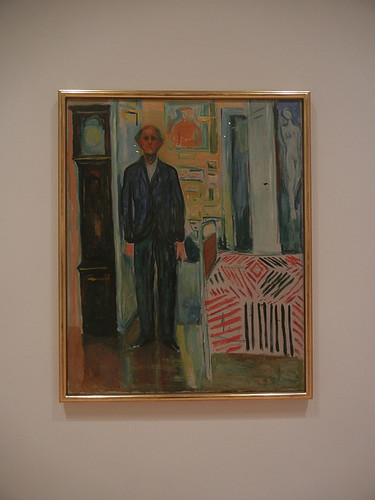
Self-Portrait with Bottles, ca. 1938 & Between the Clock and the Bed, 1940-43


The Night Wanderer, 1923-24 & Self-Portrait with Hands in Pockets, 1925-26

Self-Portrait by the Window, ca. 1940
Then, a group of symbolism works, mysterious and forbidding, featuring isolated figure(s), or their shadows, in starkly outlined and dramatically lit environment:

Moonlight, 1893

The Storm, 1893


Lady in Black (Olga Buhre), 1891 & On the Veranda Stairs, 1922-24

Night in Saint-Cloud, 1893

Starry Night, 1922-24
Next group focused on the ill and the dying, often with women as bereaved protagonists:

Inheritance, 1897-99

The Sick Child, 1896

The Sick Child, 1907


The Death of Marat, 1907
From the death, we moved onto works examining sexual awareness and tension:

Puberty, 1894


Female Nude (Anna), 1920 & Model by the Wicker Chair, 1919-21

Weeping Nude, 1913-14

The Artist and His Model, 1919-21
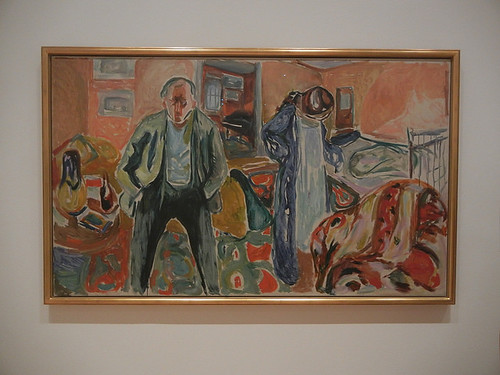
The Artist and His Model, 1919-21
Then, back to more symbolic works. One of these,
Despair (1894) recalled Munch's most recognizable work,
The Scream, which was not part of the exhibition, though one hardly noticed its absence, when surrounded by so many insightful and disturbing works:

Madonna, ca. 1895-97

Ashes, 1925


Red Virginia Creeper, 1898-190

Despair, 1894
More self-portraits, featuring the artist examining himself in unflinching ways:


Self-Portrait with Cigarette, 1895 & Self-Portrait in Hell, 1903
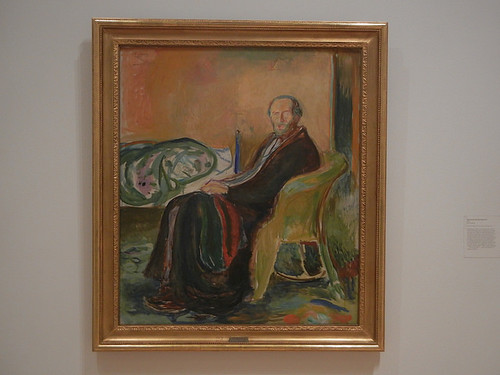
Self-Portrait with the Spanish Flu, 1919

Man with Bronchitis, 1920

Sleepless Night: Self-Portrait in Inner Turmoil, 1920
Next group again, depicting the the death of his sister, as in the the two "Sick Child" above. These were just as personal to the artist, but the paintings were more somber and archetypal than individual:
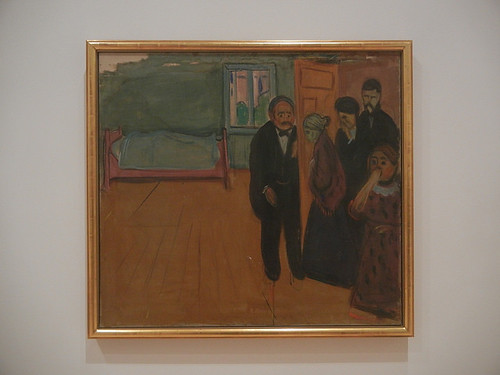
The Smell of Death, 1895

Death in the Sick Room, 1893

At the Deathbed, 1895
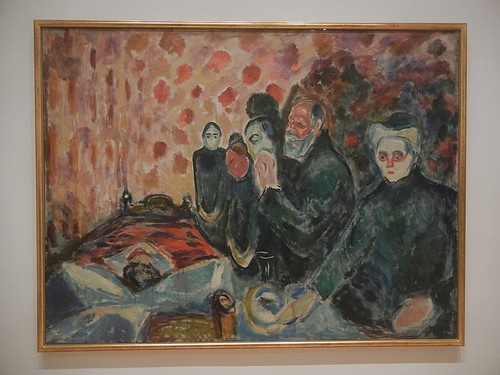
Death Struggle, 1915

Finally, a final survey of the land of mystique and symbols:


Eye in Eye, 1899-1900 & The Kiss, 1897

Jealousy, ca. 1907

The Dance of Life, 1925
Emotionally draining, yet hugely satisfying.
Other Related posts on
Art · 文化 · Kunst:
-
Tomás Saraceno at SFMOMA
-
Introduction to Fisher Collection and the 75th Anniversary Exhibit at SFMOMA
-
Preview of the Newly Expanded SFMOMA-
Unauthorized SFMOMA Solo Show
-
Cy Twombly (April 25, 1928 – July 5, 2011)
-
Three Heads, Six Arms (Nezha), Giant Bronze Scuplture at Civic Plaza, San Francisco
-
@Large: Ai Weiwei on Alcatraz
-
A Day at Palace of Fine Arts & Crissy Field in San Francisco

